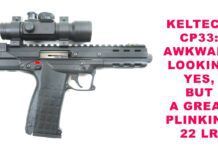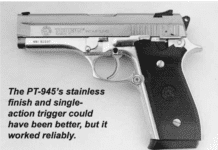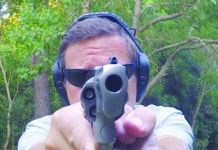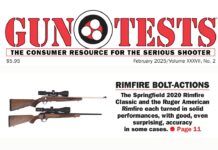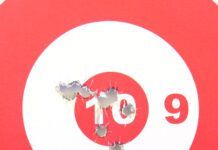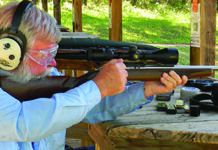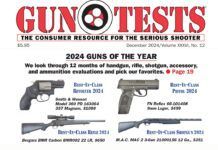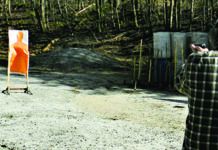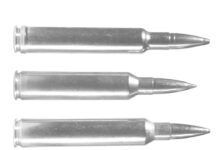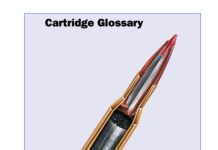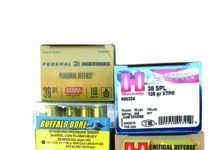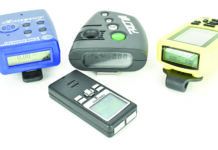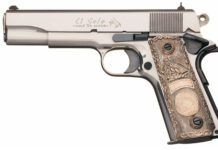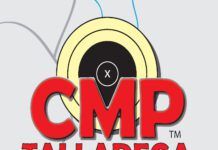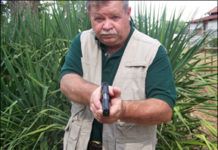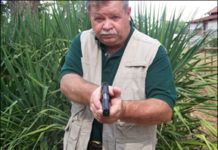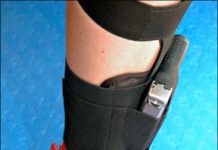Sturm, Ruger wins 3rd Firearms Manufacturer of the Year Award
C3 Defense Adding 22 LR Suppressor
LaserMax to Add M&P Guide Rod Laser in mid-December
GunPal Ramps Up as Replacement for PayPal on Firearms Transactions
Leupold Introduces Mark 4 ER/T M3 Front Focal Riflescope
Self-Defense Handgun Sights: Novak and Wilson Combat Win
Where is no end to debate concerning handgun sights and their use. Personal preference plays a role, but a poor choice in a defensive handgun may have serious consequences. Good enough and bargain basement dont cut it. Even the use of sights is debated. Some argue for point shooting or instinctive fire at close range. Unsighted fire sounds like a disaster waiting to happen. The keys to accurate fire include smooth trigger compression, proper sight alignment and proper sight picture. Area aiming or aiming for the whole target is not going to get the job done.
For most gun-buyers, sights are a make-or-break part of the purchase, as important as the cartridge. Sights can-and should-influence which guns you buy. Also, on guns you already own, you can upgrade the sights, especially 1911s and Glocks-if you know what works, and what doesnt. A person who purchased the best pistol he could afford at the time may wish to upgrade to better sights at a later date, but how does he know what to choose?
We wanted to compare the execution of several sights found on existing factory guns and as aftermarket products to see which one offered the best combination of sight quality, ease of presentation, and durability. This is a tricky job description for a sight, because those requirements can be contradictory. In the past the shortcomings of pistol sights were understood. A universal fault was the round front sight. Where was the top of the sight? Sight pictures were not repeatable. About 1923 a Western peace officer named Tom Threepersons had a square and tall front sight added to his 4.75-inch-barrel Colt Single Action Army. Better sights followed.
Among the first practical high-visibility handgun sights were Kings Hardballer sights. They raised the sight picture and offered an improvement over small GI sights. The problem with fitting combat sights on a self-defense gun is the height of target-type sights. Too-tall front and rear sights became so obtrusive the handgun became difficult to holster. If you use a rear sight that sets tall above the frame, then the front sight must have a correspondingly high profile. The revolution came with Wayne Novaks Lo Mount sights. Designed like a pyramid, these sights require a special mounting cut in the slide to ride low. The front sight may be as low as .200 inch, although a .249 sight is also used.
Reducing the vertical profile of a sight is important because adjustable sights are exposed to all manner of insult and are relatively fragile. If you visit a police department, you notice that the area around the door jamb of the squad room is often beaten up. This is because that is hip level, and cops guns, especially the sights, take a beating on doorways. And, of course, sights are rubbed on by holsters, and they may impede drawing the weapon when you need it most.
To consider these issues, we looked at nine different common sight styles on a host of guns. GI sights, Mil Spec sights, Trijicon sights, XS big dot sights, Novak sights, Heinie sights, McCormick sights, Para Ordnance sights, and Wilson Combat sights.
Self-Defense Handgun Sights: Novak and Wilson Combat Win
Where is no end to debate concerning handgun sights and their use. Personal preference plays a role, but a poor choice in a defensive handgun may have serious consequences. Good enough and bargain basement dont cut it. Even the use of sights is debated. Some argue for point shooting or instinctive fire at close range. Unsighted fire sounds like a disaster waiting to happen. The keys to accurate fire include smooth trigger compression, proper sight alignment and proper sight picture. Area aiming or aiming for the whole target is not going to get the job done.
For most gun-buyers, sights are a make-or-break part of the purchase, as important as the cartridge. Sights can-and should-influence which guns you buy. Also, on guns you already own, you can upgrade the sights, especially 1911s and Glocks-if you know what works, and what doesnt. A person who purchased the best pistol he could afford at the time may wish to upgrade to better sights at a later date, but how does he know what to choose?
We wanted to compare the execution of several sights found on existing factory guns and as aftermarket products to see which one offered the best combination of sight quality, ease of presentation, and durability. This is a tricky job description for a sight, because those requirements can be contradictory. In the past the shortcomings of pistol sights were understood. A universal fault was the round front sight. Where was the top of the sight? Sight pictures were not repeatable. About 1923 a Western peace officer named Tom Threepersons had a square and tall front sight added to his 4.75-inch-barrel Colt Single Action Army. Better sights followed.
Among the first practical high-visibility handgun sights were Kings Hardballer sights. They raised the sight picture and offered an improvement over small GI sights. The problem with fitting combat sights on a self-defense gun is the height of target-type sights. Too-tall front and rear sights became so obtrusive the handgun became difficult to holster. If you use a rear sight that sets tall above the frame, then the front sight must have a correspondingly high profile. The revolution came with Wayne Novaks Lo Mount sights. Designed like a pyramid, these sights require a special mounting cut in the slide to ride low. The front sight may be as low as .200 inch, although a .249 sight is also used.
Reducing the vertical profile of a sight is important because adjustable sights are exposed to all manner of insult and are relatively fragile. If you visit a police department, you notice that the area around the door jamb of the squad room is often beaten up. This is because that is hip level, and cops guns, especially the sights, take a beating on doorways. And, of course, sights are rubbed on by holsters, and they may impede drawing the weapon when you need it most.
To consider these issues, we looked at nine different common sight styles on a host of guns. GI sights, Mil Spec sights, Trijicon sights, XS big dot sights, Novak sights, Heinie sights, McCormick sights, Para Ordnance sights, and Wilson Combat sights.
Three More Ankle Guns: Kahr, Springfield, and Walther 40s
In the July 2009 issue of Gun Tests, we evaluated three small revolvers chambered for 38 Special. These guns were chosen specifically as candidates for concealment inside a holster strapped to the ankle. In this test we will look at three semiautomatic pistols suitable for ankle carry or other deep concealment. Each of the guns in this test are chambered for 9mm or 40 S&W, but we went with the bigger round here. Our test guns are the $786 Kahr PM40 No. 4043 40 S&W, Walther PPS No. WAP10002 40 S&W, $713; and the Springfield Armory Enhanced Micro Pistol No. PI9240LP, $1329. Despite their small sizes, these guns are as pricey as many popular full-size models. But if it comes down to drawing a gun from deep concealment, at least you can take comfort in knowing you're not about to depend on a cheap pistol. In fact, all three guns completed our tests without malfunction.
For testing in the summer heat we arrived at Phil Oxley's Impact Zone, located in Monaville, Texas, at daybreak (theimpactzonerange.com). The shade of a cypress tree and a steady breeze helped us keep cool as we practiced firing each gun standing offhand and from the bench before attempting shots of record. Then we fired five-shot groups from sandbag support to establish accuracy from the 10-yard line. We also engaged two different action tests that we hoped would tell us more about each gun's capability when fired standing without support.
First, we tried our familiar test of delivering two shots to the center of an IPSC metric target followed by a single shot to the head area of its humanoid silhouette. Center mass on the target consisted of an A-zone measuring 6.0 inches wide and 11.0 inches tall. The head area measured 6.25 inches by 6.75 inches overall, with another A-zone measuring 4.0 inches by 2.0 inches to designate a preferred area of impact. After an audible start signal, the elapsed time of each shot was displayed by an electronic timer. Ten separate strings of fire were recorded. Test distance was 7 yards.
Our second action test also required three shots per draw but only to the center of the target. Instead of holding the gun in both hands, the shooter utilized only his strong hand (right hand only for a right-handed shooter or left hand only for the left-handed shooter). In each case the start position was holding the gun pulled back toward the chest with little more than the muzzle at the bottom of the shooter's vision. Upon start signal, the gun was thrust toward the target.
Our list of test ammunition consisted of four different loads. For our bench session we fired Winchester USA's 165-grain FMJ rounds and two choices from Black Hills. They were remanufactured loads (sold in blue boxes) topped with a 180-grain FMJ bullet and Black Hills new manufacture 180-grain jacketed hollowpoints packed in red boxes. For our action test, we relied upon Black Hills new manufacture 155-grain JHP rounds to help us paint a picture of how each gun might perform filled with defensive ammunition when rapid fire was called for. Here is what we learned.


